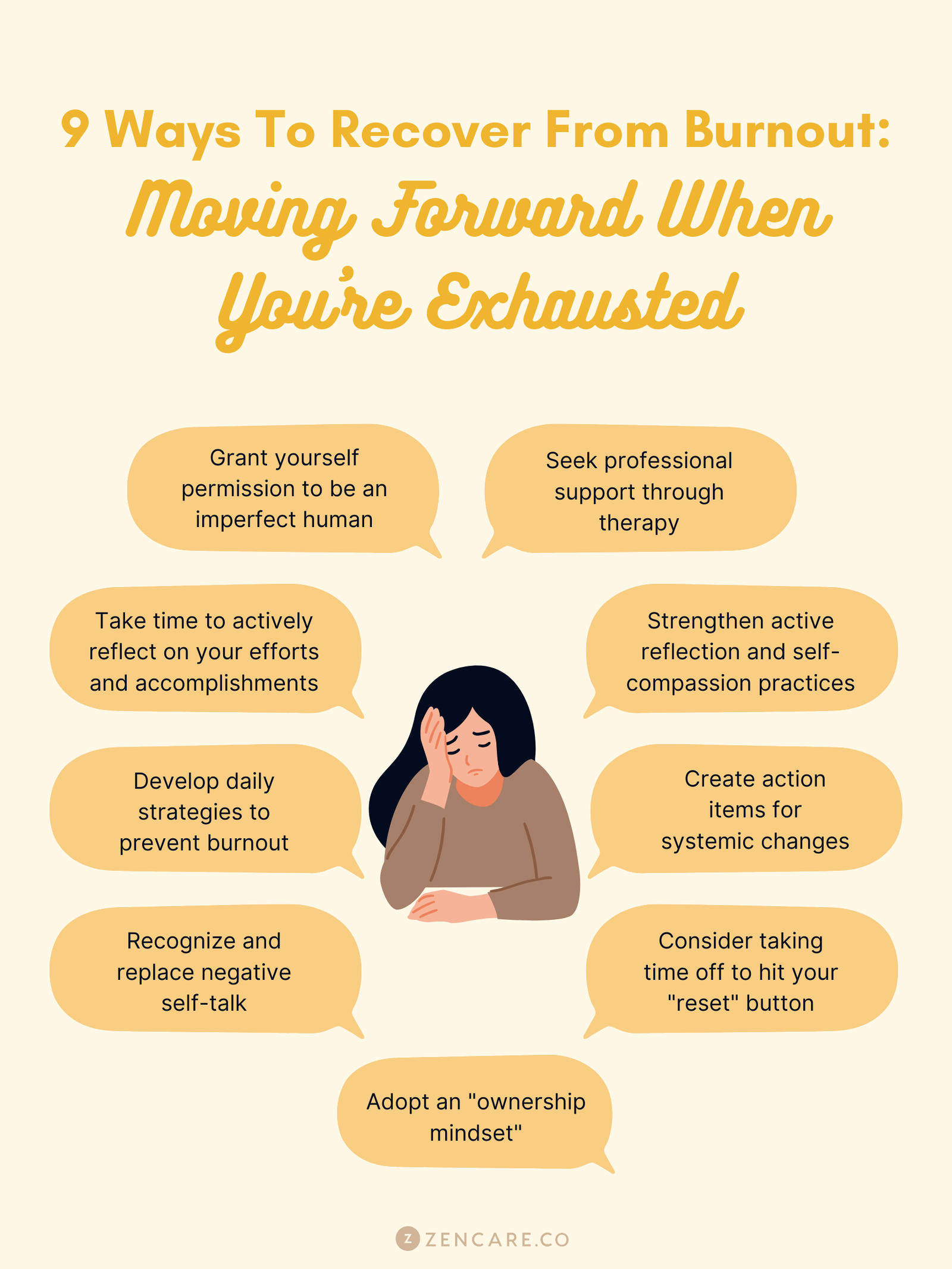Summary
Workplace burnout—characterized by emotional exhaustion, cynicism, and reduced efficacy—is at an all-time high in the U.S., affecting up to 66% of workers in recent surveys. In this guide, we define burnout, explain its causes and signs, and provide evidence-based strategies for recovery and prevention. Through stories, expert insights, and practical steps, you’ll learn how to heal, rebuild resilience, and reclaim balance in your career.
Why Burnout in the Workplace Is a National Crisis
Burnout isn’t just “feeling tired” or “having a stressful day at work.” It’s a chronic, cumulative condition that erodes performance, health, and overall well-being.
The numbers show the scale of the problem:
- A 2025 Forbes survey found that 66% of U.S. workers report burnout symptoms—an all-time high.
- A Grant Thornton survey revealed that 51% of employees experienced burnout in the past year; 63% said it stemmed from mental and emotional stress.
- According to Deloitte, 77% of employees say they’ve experienced burnout at their current job—often more than once.
- Burnout costs are staggering: disengagement can cost employers up to 17 times the cost of training per employee and far higher health expenses.
These stats highlight not just personal suffering but real organizational risks: productivity loss, absenteeism, turnover, and morale decline.
What Is Burnout? Understanding the Definition & Dimensions
The World Health Organization’s ICD-11 defines burnout as a syndrome resulting from chronic workplace stress that has not been successfully managed. It includes:
- Emotional exhaustion – feeling drained, fatigued, unable to give more
- Cynicism or depersonalization – detachment, negativity toward work
- Reduced professional efficacy – diminished sense of competence and achievement
This goes beyond ordinary stress—it’s prolonged, pervasive, and deeply impacts attitudes toward work and life.

What Causes Burnout? Key Drivers in Modern Workplaces
Burnout rarely comes from a single factor. Instead, it’s usually a combination of systemic workplace issues and personal stressors.
Top Drivers of Burnout in the U.S. Workplace
- Excessive workload & long hours – chronic overwork drains capacity.
- Lack of control & autonomy – feeling micromanaged, powerless.
- Poor rewards & recognition – working hard without acknowledgment.
- Unclear job expectations – confusion breeds anxiety.
- Toxic or unsupportive culture – isolation, gossip, hostility.
- Work-life imbalance – inability to disconnect after hours.
- Unfairness or inequity – bias, favoritism, lack of justice.
In 2024 surveys, employees ranked mental and emotional stress as the leading cause of burnout. Remote work has also blurred boundaries, with many Americans reporting “always-on” fatigue.
How to Recognize Burnout: Signs & Symptoms
Burnout develops gradually and can be tricky to spot until it’s severe. Awareness is the first line of defense.
Emotional & Cognitive Signs
- Constant fatigue, low energy
- Irritability, short temper
- Cynicism or detachment from work
- Poor focus, decision fatigue
- Negative self-talk and hopelessness
Behavioral & Performance Indicators
- Declining productivity and quality of work
- Avoidance of meetings or collaboration
- Procrastination and missed deadlines
- Withdrawal from social or work activities
- Skipping breaks, overworking as “compensation”
Physical & Health Symptoms
- Headaches, muscle tension, back pain
- Sleep problems (insomnia or oversleeping)
- Stomach issues, appetite changes
- Weakened immunity, frequent illness
- Chronic fatigue, weight fluctuations
Experts note that stress manifests physically as well as mentally—tight muscles, high blood pressure, and poor sleep are common early warnings.
Real-Life Stories of Burnout
Jordan – The Overworked Tech Lead
Jordan managed a software team in Silicon Valley. When two team members left, he took on their workload. Months of 12-hour days left him exhausted and irritable. He eventually needed medical leave, realizing burnout had damaged both his health and relationships.
Linda – The Healthcare Worker on the Edge
Linda, a nurse, endured overwhelming patient loads during the COVID years. The emotional toll and constant stress left her numb, sleepless, and fatigued. Small steps like journaling, therapy, and peer support gradually restored her balance.
Trey – The Remote Marketer
Trey thrived in marketing at first, but after two years of remote work without human contact, he lost his passion. He worked mechanically, with no joy. He eventually shifted to freelance projects that allowed him to set boundaries and rediscover balance.
How to Recover from Burnout: Evidence-Based Strategies
Recovery doesn’t happen overnight—it’s a step-by-step process that blends rest, boundaries, and long-term resilience.
1. Acknowledge the Problem
Admit that burnout is real and that recovery requires action, not just “pushing through.” Self-compassion matters.
2. Rest & Recharge
- Take time off if possible—vacations or mental health leave.
- Schedule daily micro-breaks of 5–10 minutes.
- Use weekends for genuine rest, not catch-up work.
3. Rebuild Boundaries
- Set firm work start and end times.
- Turn off devices after hours.
- Practice saying no to excessive tasks.
4. Seek Support
- Talk with colleagues, mentors, or loved ones.
- Explore therapy or coaching.
- Use Employee Assistance Programs (EAPs) if available.
5. Adopt Stress-Relief Practices
- Meditation, deep breathing, yoga
- Journaling or gratitude practice
- Creative hobbies like art, music, or gardening
6. Redesign Your Workload
- Clarify expectations with supervisors.
- Delegate or eliminate low-value tasks.
- Reframe tasks to highlight meaning.
7. Focus on Health Basics
- Sleep: 7–9 hours nightly
- Nutrition: balanced, whole foods
- Exercise: at least 150 minutes weekly
- Hydration and reduced caffeine/alcohol
8. Build Long-Term Resilience
- Conduct monthly self-check “stress audits.”
- Keep a journal to track moods and triggers.
- Slowly build restorative habits into your routine.
Preventing Burnout Before It Starts
It’s easier to prevent burnout than to recover from it. Preventative strategies include:
- Clear boundaries on work hours
- Rotating tasks to avoid monotony
- Scheduling buffer time for unexpected tasks
- Fostering community and peer support
- Promoting open conversations around stress
- Leadership modeling healthy behaviors
Small rituals—like mindful breaks, movement between tasks, or end-of-day shutdown routines—make a big difference over time.
Frequently Asked Questions (FAQs)
1. Is burnout a medical condition?
Not classified as a disorder, but the WHO defines it as a work-related syndrome with real health consequences.
2. Can burnout lead to depression?
Yes. Prolonged burnout often overlaps with depression and anxiety.
3. How long does recovery take?
Anywhere from weeks to several months depending on severity and support.
4. Does changing jobs fix burnout?
Not always. A healthier environment helps, but habits and coping strategies are key.
5. What industries are most at risk?
Healthcare, education, tech, and finance are consistently high-risk.
6. Can remote workers burn out?
Yes. Remote work can blur boundaries and create 24/7 availability stress.
7. When should I seek professional help?
If symptoms persist, worsen, or lead to depression or harmful thoughts—seek therapy immediately.
8. Is burnout permanent?
No. Many fully recover, but preventive strategies are essential long-term.
9. What’s the difference between stress and burnout?
Stress is temporary and often motivates action; burnout is prolonged, draining, and leads to detachment.
10. Can employers prevent burnout?
Yes—by promoting fair workloads, recognition, autonomy, and mental health support.
30-Day Burnout Recovery Plan
Week 1: Reduce Stressors
- List top stress triggers
- Block off downtime daily
- Turn off nonessential notifications
Week 2: Restore Basics
- Commit to 7+ hours of sleep
- Add 20 minutes of daily exercise
- Practice 5 minutes of breathing meditation
Week 3: Build Support
- Share openly with a friend or mentor
- Join peer groups or professional support
- Learn to say “no”
Week 4: Redesign Work
- Reassess goals and priorities
- Delegate noncritical tasks
- Add one joy-building activity daily
Final Thoughts: Burnout Is Not a Failure
Burnout is not weakness—it’s a signal. It tells us our work demands and personal resources are out of balance. By recognizing the signs, taking deliberate recovery steps, and setting new boundaries, we can recover and even thrive again.
Burnout recovery is about more than survival—it’s about rediscovering meaning, health, and sustainable success in the workplace.
Read this also : https://bodymindrelief.us/mental-health-and-chronic-illness-the-connection/
